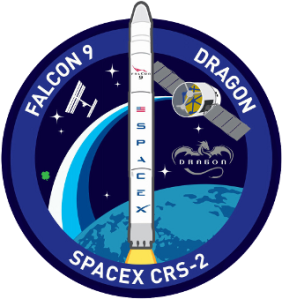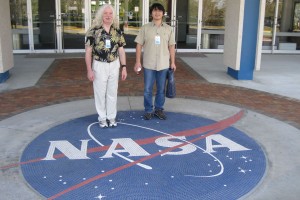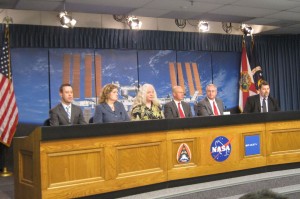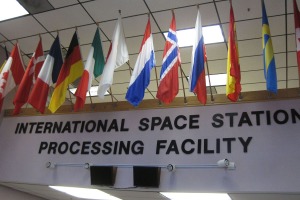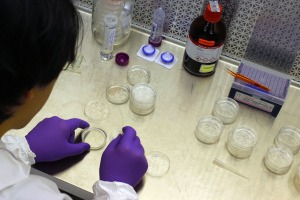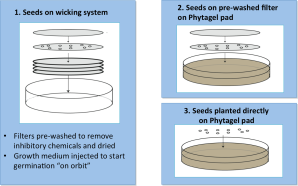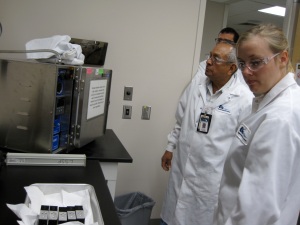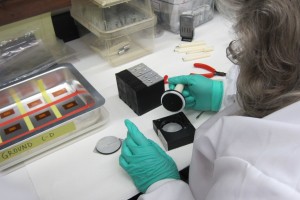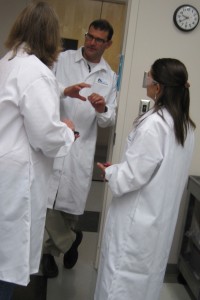In a few hours, the Gilroy lab BRIC-17 team will be at the OSB II (Operations Support Building 2) at KSC to watch the launch. OSB is about three and a half miles away from the launch pad, so we hope to have a good view. We’ll be bussed there from the visitor center early in the morning. Following a launch briefing we will wait for the launch at an outside viewing area, camera in hand!
Unfortunately, we will be enjoying the launch after pulling an all-nighter in order to integrate our ground controls into the BRICs with the help of NASA hardware experts. The timing of our experiment is such that our science has to be integrated into the space hardware from 3-5am Eastern time. Our flight BRICs were prepared early Wednesday morning; because the ground control is offset by 2 days we have to make a repeat set of BRICs now (early Friday morning).
What if the launch is cancelled? The scrub schedule is such that the next launch attempt will occur just under 24hr later. If there are two scrubs, our experiment needs to be replaced with a fresh setup. Therefore, if the launch is cancelled both Friday and Saturday, our two BRICs will be pulled from Dragon. The ground controls we set up tonight will then become the flight BRICs and loaded into the Dragon in time for the third launch attempt Sunday morning, and so Sunday morning between 3-5am Eastern time we will have to set up two more BRICs for the new ground controls.
Tomorrow’s launch chance is at 80%. Everyone, please do us a huge favor and keep your fingers crossed for an on-time departure! (That means you too, Sis!)
In other news, yesterday (Thursday Feb 28) Simon participated in two news events. The first was an interview with Jerry Hume , a reporter with the local Fox channel 13. We were told that while the transcript will be available online, the video will not because it will only be accessible to cable subscribers. It will air between 5am and noon Friday.
The second news event was a pre-launch NASA press conference to discuss the science going up on SpaceX 2. The location of the press conference was in the NASA auditorium in the KSC press center, and for me it was a thrill to actually be sitting in a place that previously I’ve only seen on TV and online. There were five folks in front of the cameras, plus Josh the moderator:
- Julie Robinson, program scientist, International Space Station
- Simon Gilroy, BRIC-17 Lead Investigator, University of Wisconsin
- Marshall Porterfield, division director, Life and Physical Sciences NASA Headquarters
- Michael Johnson, Chief Technical Officer, NanoRacks
- Michael Roberts, Research Scientist, CASIS
Simon did a great job communicating information specifically about our BRIC-17 experiment and speaking more generally about problems that living organisms have in space. He also fielded a number of questions from reporters ranging from social media bloggers to tech reporters from the mainstream media. The video of this press conference is not yet available online, when it is I will update with a link.

